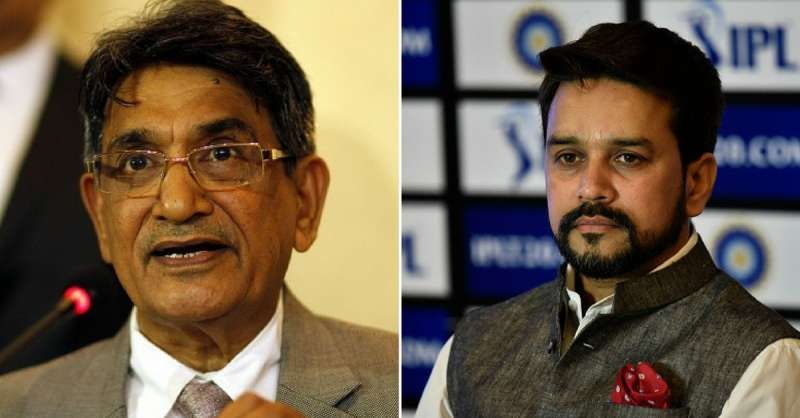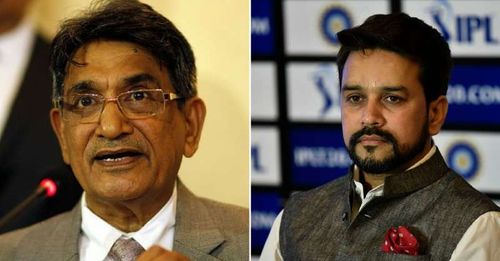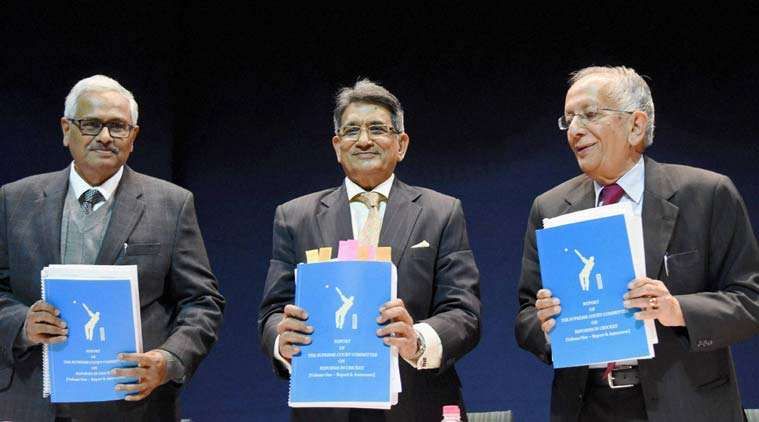
BCCI vs The Supreme Court: A detailed timeline of everything as it happened
The Indian Premier League took off in 2008 and has enthralled cricket fans all over the world ever since. The mixture of Cricket, Bollywood and entertainment had to sell and has sold, unlike anything else the world has ever seen.
The recipe was too intoxicating for some to handle and it hit its tipping point in 2013 when the Delhi Police arrested 3 cricketers who represented the Rajasthan Royals franchise, namely, S Sreesanth, Ankeet Chavan and Ajit Chandila in an alleged spot-fixing case.
Around the same time, the Mumbai Police arrested Vindu Dara Singh and Gurunath Meiyappan (son-in-law of Chennai Super Kings owner N Srinivasan) for having links with bookies and alleged betting on IPL games.
This was a big blow to the reputation of what was becoming one of the most lucrative leagues around the world in professional sport. Something had to be done.
And so it was. The Supreme Court appointed a committee under Mukul Mudgal (A Delhi High Court judge) to examine claims of irregularities in the BCCI and the IPL.
The Committee delivered their verdict in November 2014, condemning IPL Coo Sundar Raman, Gurunath Meiyappan, Team Principal of CSK and Rajasthan Royals co-owner Raj Kundra for betting on cricket. Further, they also implicated N Srinivasan (BCCI President and ICC Chairman at various points and CSK owner) of not acting against the accused despite knowing of their violations.
A mere two months later, in January 2015, the Supreme Court constituted a committee under former Chief Justice of India RM Lodha to recommend reforms for cricket in India and determine punishments for those accused by the Mudgal Committee.
The Committee would be known as the Lodha Committee
In the past 20 months, the Lodha Committee and the BCCI have engaged in a tug-of-war with each party not willing to give up an inch.
The former laid down guidelines that will have wide-ranging implications on the board after a detailed 12 months study.
The BCCI, led by Anurag Thakur has remained steadfast in its functioning, incorporating a few of the changes, while expressing their reservations over some of the other suggested changes.
A detailed timeline of everything that has transpired since the committee’s inception is below
Latest update –
Jan 2, 2017 – Supreme Court sacks Anurag Thakur, Supreme Court
After a year of dilly-dallying, the SC finally struck with a monumental decision to sack BCCI Chief Anurag Thakur and secretary Anurag Thakur after the BCCI failed to adapt a whole number of the recommendations put forward by the Lodha Committee. Despite several warnings by the court, the BCCI failed to adhear to the recommendations and it evenutally cost them their job.
January 2015 - Lodha Committee comprising of three members appointed
The committee had 3 primary objectives -
To determine punishments for Gurunath Meiyappan and Raj Kundra along with their respective franchises, CSK and the Rajasthan Royals
To examine the role of IPL COO, Sundar Raman in 2013’s spot-fixing scandal and impose a suitable punishment on him on behalf of BCCI
Most importantly, to suggest amendments to the processes followed by BCCI with a view to improving the functioning of the Indian board and suggest changes to its constitution.
April 14, 2015: Lodha Committee sends across questionnaire to BCCI
The Committee sent a list of 82 questions, divided into 8 sections to comprehensively understand how the BCCI functions.
The sections included: How the BCCI and its stakeholders’ function, transparency in the IPL, how the board forms various committees, conflict of interest issues and players’ welfare.
Jan 4, 2016: Lodha Committee presents its recommendations
After a thorough study of the BCCI’s functioning, the committee presented its recommendations to the apex board.
Key takeaways -
One-state-one-vote policy to be incorporated
Ministers and bureaucrats to be made ineligible to hold positions on the board
Age limit of 70 years to be set for all members
Maximum of 3 terms of 9 years across the 5 positions on the board
One cannot serve two consecutive terms - ‘cooling-off’ period required
BCCI Working Committee (Highest decision-making body) to be replaced by 9-member Apex Council
Appointment of 3 independent officials - An ombudsman, an ethics officer and an election officer
Setting up of a players’ association
Jan 7, 2016: BCCI acknowledges Lodha recommendations
Anurag Thakur (Then BCCI Secretary) writes an e-mail to all state associations to study the Lodha recommendations, understand its implications and to submit their individual reports to the BCCI by the end of the month.
Feb 4, 2016: Supreme Court attempts to speed up the process
With the state associations dilly-dallying on their individual assessment of the recommendations, the Supreme Court tells the BCCI to make its stance on the recommendations clear, one way or another.
Further, the SC said if the bodies had any trouble implementing the reforms, the Lodha Committee would do it themselves.
March 3rd was set as the deadline day for the BCCI to respond.
March 2, 2016: The BCCI list out their reservations
The BCCI responded to the Supreme Court one day prior to the deadline about the Lodha Committee recommendations. The body pointed out that it had implemented a few of the reforms, but also had an issue with a few of the changes.
Reforms implemented -
The board appointed an ombudsman.
System put in place to counter conflict of interest issues.
Started the process to appoint a new CEO, CFO and other top management positions.
Recommendations it does not agree with -
The tenure of holding an office position (3 terms of 9 years in total).
Age limit of being an office-bearer.
Restrictions on advertisements during ODIs and Tests.
The one-state-one-vote policy.

